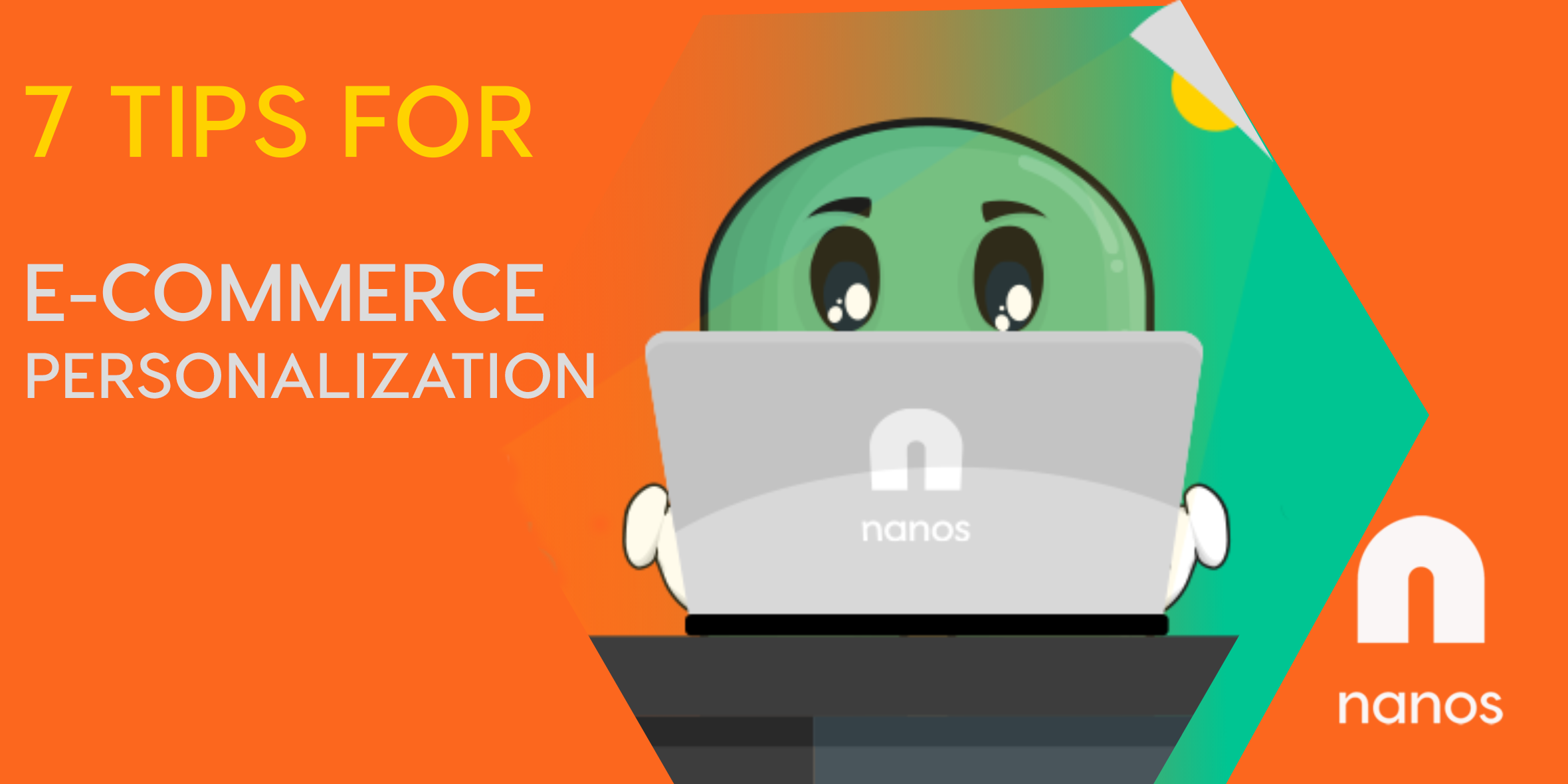Table of Contents
7 tips for e-commerce personalization
Imagine you walk into a store and are greeted by a salesperson who knows your taste in brands, exactly what you want, provides you with offers based on the kind of credit card you carry – all without being pushy. Keeping customers happy and loyal requires a fine blend of optimizing both your product offering and consumer experience.
The most successful retailers continually improve product offerings to new and existing customers. There’s also a strong focus on the shopping experience in a way which makes customers feel welcome and happy.
Gartner predicts a 15% boost in profits by 2020 for those businesses which successfully integrate personalization in e-commerce. Yet, only seven percent of organizations cited personalization as their main priority for the business. There is clearly a lot of work to be done and opportunity to be had.
What is e-commerce personalization?
E-commerce personalization is the art and science of delivering specific shopping experiences to targeted visitor subgroups to increase conversions and revenue. This is achieved through showing individualized offers, product recommendations, and content to visitors based on previous actions, demographics, and other personal preferences.
Personalized marketing – done right – can make your buyers feel like you’re talking directly to them. According to a recent report by Accenture, 91% of consumers are more likely to buy from companies who remember them and provide relevant offers. Further, 83% of them are also willing to share their data in exchange for a personalized experience.
Surprisingly, more than 74% of marketing leaders still struggle to increase their personalization efforts. More than 70% of customers feel frustrated when their experience is impersonal. It’s time to think about a personalization strategy!
How to implement a successful personalization strategy
Today’s customers are gravitating toward brands that make them feel heard and seem to understand their specific wants and needs. E-commerce personalization is becoming more pervasive. Companies hope to be in a position to deliver value to their customers through their brands.
Here are our seven steps for a personalization strategy that adds leverage by personalizing the customer experience:
1. Create personalized homepages
Unlike brick-and-mortar shops, online stores have the opportunity to get to know their visitors closely following just the initial visit. Personalizing your homepage is a simple trick, yet it helps customers find their way around easily.
2. Offer personalized guides
Providing on-site assistance to your visitors with quizzes, size, and style guides are effective ways of helping users make better buying decisions. Remember, their choices are better guided with personalized recommendations.
3. Display recently viewed items
By personalizing the homepage based on a consumer’s previous sessions, you encourage an uninterrupted shopping experience. This way, consumers can discover more items they can like, from a wide range of product categories.
4. Personalize product pages based on location
If you’re shipping to multiple locations, make sure you stay relevant to the visitor. Keep the cultural or seasonal differences in mind. Using geo-targeting allows to also display relevant campaigns based on location specifics.
5. Create special campaigns based on user behavior
Users who land on your site for the first time are different from returning visitors. They have different needs and questions in mind. You can offer first-time visitors an incentive to sign up for your email list and help them visit you again.
If a visitor is already a subscriber, you might want to personalize the message for them, instead of showing them another signup form. The idea is to capture visitors when they’re about to leave and convince them to take action.
6. Get personal in email marketing
Emails can be a powerful technique in a personalization strategy. You can send highly targeted emails to website visitors, based on what they search for, which items they view or add to their wishlist.
For frequently purchased consumer goods, send customers replenishment emails to remind them that the time to reorder is approaching. These helpful reminders foster customer loyalty and increase the likelihood of repeat purchases.
7. Make more personal recommendations
According to a study by Barilliance, personalized product recommendations account for almost 31% of e-commerce sales and have a significant effect on conversion rates. Suggesting similar or items which complement one another has become critical in increasing click-through rates for online businesses.
Following through is what gives results
Your only limits are your resources at hand and level of creativity. With that said, look at e-commerce personalization as an extension or a tool in your optimization toolkit. It’s not a silver bullet, and you won’t see a drastic increase immediately, but through consistency, the results will come. E-commerce personalization should be part of your overall e-commerce strategy.
Want to know more about how you can successfully market your new personalization strategy? At Nanos, we are happy to help you with your campaign. Contact us or book a free consultation today!















